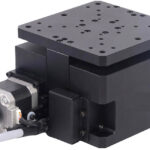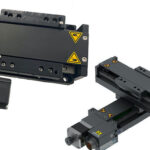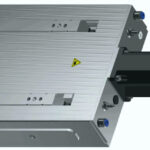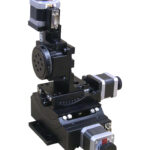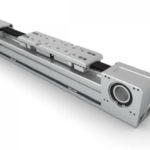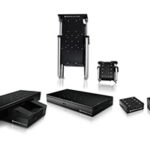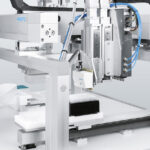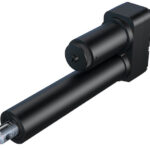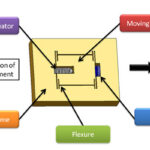Optimal Engineering Systems, Inc. (OES) has released two new motorized elevator stages, the DAG20-120-01 and the DAG20-120-04. These high-resolution, compact, low-profile elevator stages feature high stability 120 x 120 mm tables and 20 mm of vertical travel. High precision ball bearing profile rails assure high parallelism and smooth motion throughout the raising and lowering of […]
Integrated Linear Systems
PI offers new stepper motor translation stages for precision automation
The new L-836 Stepper Motor Linear Slides from PI (Physik Instrumente) are a newly designed motorized linear translation stage family that combines high performance, small dimensions, and low cost of ownership. These compact micro-positioning translation stages are driven by a robust, direct-drive rotary stepper motor, available as in-line design and folded drive train design for […]
Linear axis provides precision, stability for semiconductor manufacturing equipment
With the new TBS Linear Axis offering from ETEL, semiconductor equipment manufacturers can now integrate a high-precision linear axis enabling outstanding performance in term of accuracy and precision in its category of one-Degree-Of-Freedom (1-DOF) systems. With its ISO 2 rating for cleanrooms and incorporated HEIDENHAIN Group encoder technologies, the TBS provides high cleanliness and accuracy […]
High-precision three-axis positioning stages feature four motor options
Four new three-axis stages from OES (Optimal Engineering Systems, Inc.) feature four different motor options to best fit application needs. The YPR-45-15-60 Series of three-axes stages were developed through the integration of a 60 mm diameter rotary stage (upper axis) capable of 360 degrees of continuous operation, and two goniometers (middle and lower axes) each […]
Belt-driven linear actuators feature greater load capacity
Rollon has updated its SMART SYSTEM lineup of belt-driven linear actuators with a rugged new design that supports heavy loads and ensures low maintenance operation in automated manufacturing, packaging machines and food and beverage equipment. The actuators have a self-sustaining anodized aluminum frame and a steel reinforced driving belt, and are engineered to provide stiffness […]
Aerotech launches second generation of nanopositioning stages
Aerotech Inc. has released the second generation of its popular ANT nanopositioning stages. Building on its best-in-class predecessor, this line is engineered to bring superior performance to applications that demand truly outstanding dynamics and nanometer-level precision. “We’ve made the ANT nanopositioning stages even better, giving our customers options with impressive dynamic capabilities, industry-leading positioning performance, […]
Pandemic impacts linear motion component manufacturing, applications
Linear motion components include everything from various types of linear actuators to linear guides, slides and ways, and a host of components in between. One thing they all have in common is that their development and production are influenced by both technological trends as well as broader market forces. One of those forces has been […]
Comparing micropositioning and nanopositioning stages
Linear stage designs can range from long-stroke, high-load gantries to micropositioning and nanopositioning stages with light payloads. Although all linear stages are designed and constructed to provide high positioning accuracy and repeatability and to minimize angular and planar errors, stages for micropositioning and nanopositioning applications require additional considerations in component selection and design to achieve these […]
Ewellix launches intelligent SmartX platform for linear motion
Ewellix has launched an intelligent digital platform which will underpin a new and advanced generation of linear motion solutions. Called SmartX, the new digital platform has been designed to help engineers develop motion, robotic and automation systems that offer far greater levels of intelligence, connectivity and adaptability than are achievable from existing equipment. As a […]
What are piezo flexure stages and how do they work?
Piezo actuators provide highly responsive, rapid movements, but their displacement is limited to just 0.1 to 0.2 percent of the actuator length. To overcome this limited stroke capability, a piezo actuator can be combined with elements, such as flexures, that provide mechanical amplification. The amplification provided by a flexure mechanism can extend the stroke of […]

